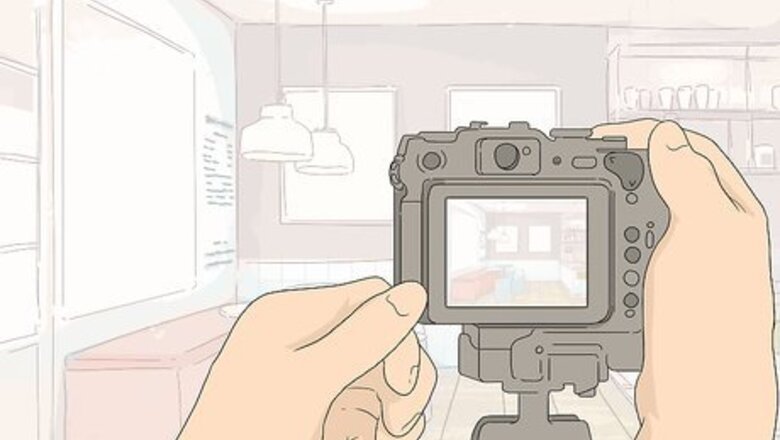
views
Getting the Essentials
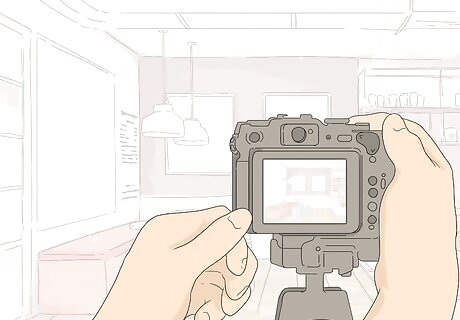
Get a high-quality camera. Lots of DIY filmmakers have used cheap cameras to make professional-looking films. Often, though, the "homemade" aspect of the footage is directly related to the story, marrying the form to the content. Decide what kind of camera you need and what kind of camera you can afford. They can cost anywhere from a few hundred to several thousand dollars. If you already have access to a relatively cheap camcorder, consider filming a story that would work well with a homemade look. In the $100-200 range, you've got lots of commercially available home recorders. Companies like JVC, Canon, and Panasonic have relatively cheap cameras that are mobile, effective, and look great. Even something like an iPhone, iPad, or iPod touch works great especially because it's easy to transfer videos recorded on your iOS device to iMovie. iOS devices have very astonishing cameras for what they are, and since most people have a phone already, then you don't have to go out and spend extra money. You could also attach an accessory over your iPhone camera like an Ollo clip, which hovers around $60-$100. The Ollo clip comes with four lenses. Cheap cameras can look great, for example: "The Blair Witch Project" was filmed on an RCA camcorder bought at Circuit City for very little money. In the $500-900 range, you've got really solid Panasonic and Sony models that have been used to make films like "Open Water" and lots of documentaries. If you're serious about making films and making more than one film, consider investing in a solid camera. Also in that range are SLR and Mirrorless cameras which can usually shoot in 4K. On an iPad, iPhone, iPod touch, or Apple Mac, there is an app called iMovie (free on the App Store). It lets you make quick, easy films, yet still, look professional.
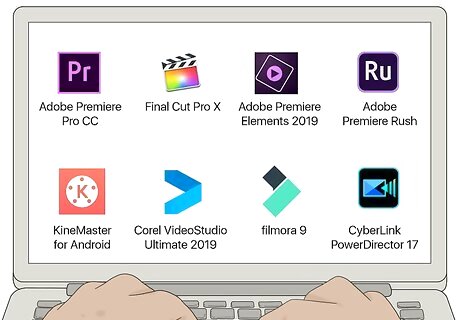
Decide how you'll edit the film. Unless you're going to go quick-and-dirty and only edit on the camera, which would involve filming everything in order and filming only perfect takes, (which is very time-consuming). you'll need to import the footage onto a computer. Mac computers come with iMovie and PCs come with Windows Movie Maker, basic types of editing software that will allow you to edit the footage together, mix in the sound, and even add credits. You can upgrade to more complex and professional editing software like Final Cut Pro or Adobe Premiere Pro. If these are not available two free but very professional movie editing tools are available Open Shot and DaVinci Resolve which you can get for free and use.
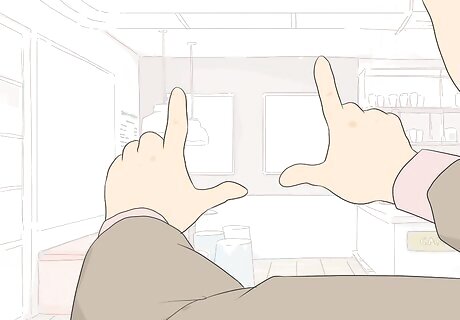
Find a place to film. Filming an outer space epic in your dorm room would be difficult, as would filming your gritty film about a street hustler in the mall. Look at what locations are available to you, and consider what stories might evolve from that location. The film "Clerks" revolves around a bunch of apathetic guys working at a convenience store, and hanging out. Without access to a said convenience store, it would have been difficult going. Businesses and restaurants are often hesitant about letting amateur filmmakers use their property for filming, but you can always ask. Often, people will be excited about the idea of being included.
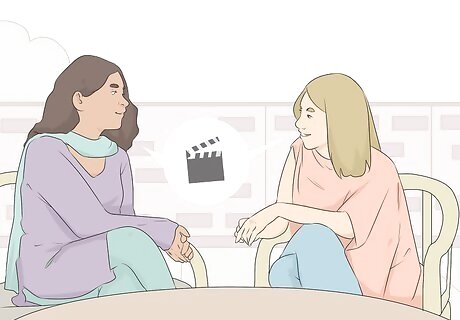
Find people willing to help. With very few exceptions, producing a film involves a large group of people who come together to serve a common goal: a great visual story that deserves telling. You'll need people to act and people to help the film. Cast your friends in these roles, or place a callout on Facebook or Craigslist to get people interested in your project. If you're not going to be able to pay anyone, make that clear right off the bat. If you live in a college town, consider putting up flyers in the drama buildings to see if any local talent might be interested. You might be surprised at how excited most people are to be included in a project like this.
Writing the Film
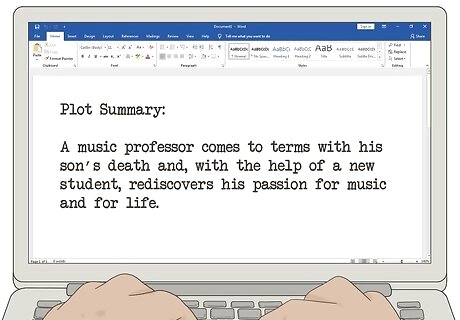
Dream up a visual story. Because most movies are essentially visual stories, the first step is coming up with an idea that you want to turn into a movie. What's something that you'll have to see to believe? You don't have to have every detail in place, but you should have a basic idea of the premise. Think about the movies you like to watch or the books you like to read and consider what makes them so interesting. Is it the characters, the action, the visuals, or the theme? Whatever it is, keep that element in mind as you plan your movie. Write out a list of all the props, locations, and actors which are currently available locally then develop a film around this. Keep a dream journal, dreams like films are visual stories and dreams. Keep a notebook with you for writing ideas down. Read the news stories in the papers. Have a basic idea, and work with that. Narrow it down as you go along while writing the plot.
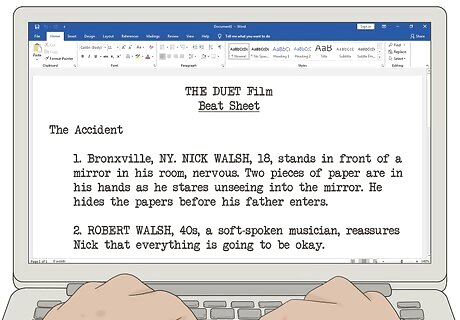
Expand your idea into a story. The essentials for building a story from your idea have to do with character. Who is your protagonist? What does your protagonist want? What keeps them from getting it? How will the protagonist be changed? If you can answer all these questions, you're on your way to a great story. It's been said that all stories have one of two basic premises: A stranger arrives and shakes up the normal way of things, or a hero departs and goes on a journey. Make sure your story has a beginning, in which the scenario and the characters are introduced, a middle, in which the conflict builds, and an ending, in which the conflict is resolved. Most stories have exciting points that make them awesome. However, too many can spoil the play.
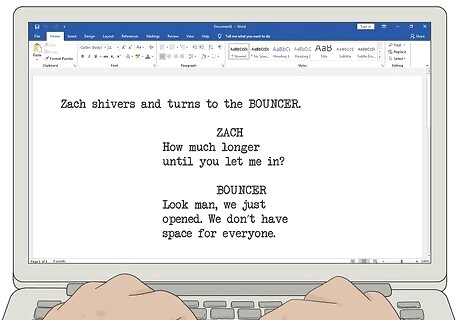
Write a screenplay. A screenplay breaks every moment of the story into an individual, film-able scene. While it may be tempting to want to costume up and start filming every scene as it comes, you'll be in much better shape if you can plan things out beforehand and think of your film scene-by-scene. A screenplay writes out all the dialog, attributed to each character, along with some physical directions, exposition, and camera movement. Each scene should start with a brief description of the scene (i.e. Interior, night). Think cheaply as you write. For your purposes, it may be much better for the story to cut out the epic 30-minute car chase and instead cut straight to the aftermath. Maybe your lead protagonist is laid up in bed, bandaged, wondering, "What happened?" Steven Spielberg Steven Spielberg, Film Director Craft a compelling narrative that will connect with your audience. "The most amazing thing for me is that every single person who sees a movie, not necessarily one of my movies, brings a whole set of unique experiences. Now, through careful manipulation and good storytelling, you can get everybody to clap at the same time, to hopefully laugh at the same time, and to be afraid at the same time."
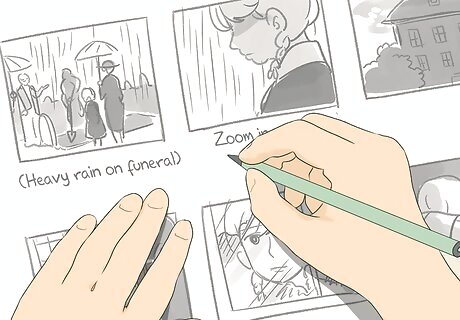
Storyboard your film. A storyboard is a comic-book-like version of the film that you'll create but without the dialog bubbles. It can be done on a large scale, drawing only each major scene or transition, or, if you've got a very visual story, It can also be done at the micro-level, planning every shot and camera angle. This process makes a long film go more smoothly, and will help you anticipate difficult scenes or sequences to film. You can try shooting without storyboarding, but it will not only help you visualize your movie but will also help you explain your vision to the other members of the crew.
Thinking Visually
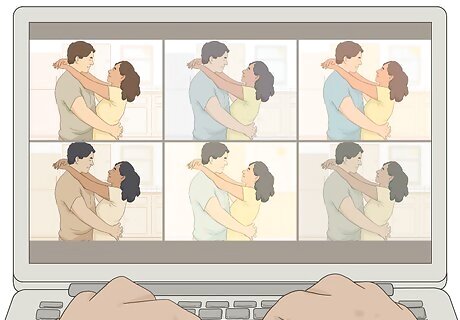
Develop an aesthetic for your film. Because movies are visual, it's a good idea to spend some time on the "look and feel" of the movie. Consider two films as an example: Matrix again, with its monochromatic, yellow-green tone throughout, which heightened the sense of being “digitized,” and A Scanner Darkly by Richard Linklater, which was rotoscoped and had a unique and memorable cartoon reality look to it. Here are some other areas to consider.
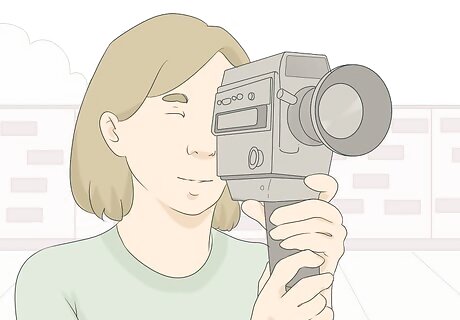
Do you want your film to feature smooth, expertly-edited shots, or a rough, handheld camera look? It’s all there to do. For example, look at Melancholia by Lars von Trier; the opening scenes were shot with a super-high-speed camera, which renders as a fluid, graceful slow motion. Most of the rest of the movie is shot with a handheld, or “shaky cam,” setting the tone for the emotional and spiritual conflicts that ripple through the movie.
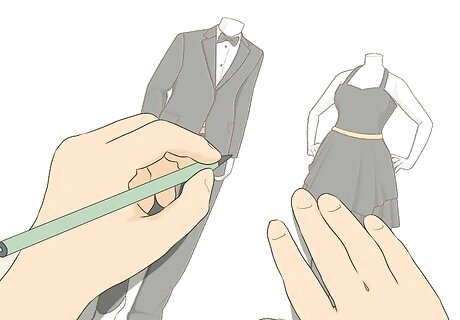
Design the costumes and sets. How do you want the setting of your film to look? Can you film it in a real location, or will you have to build a set? The sweeping panoramas of the big screen epics of the 60s and 70s relied on a combination of wide-open spaces and studio-lot sets. Scenes from The Shining were shot at a ski lodge in Oregon. Dogville was shot on a bare stage, with only suggestions of buildings as props. Films rely heavily on the costumes to communicate essential character traits to the viewer. "Men in Black" is a key example.
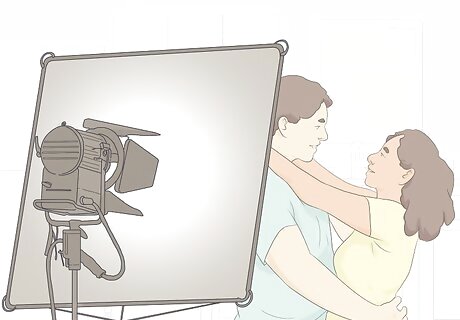
Consider lighting. Some movies feature soft, almost gauzy lighting that makes the actors and the sets look significantly more appealing, and the entire film more dreamlike; others favor a lighting style that looks closer to reality, and some people push the edges and go for a really hard light that is almost cutting. Check out Domino with Keira Knightley.

Dress the sets, or scout a location. If you're going to shoot on location, find the area you want and make sure it's available for filming. If you're working on a set, start building and "dressing" (or adding props) them. If possible, using actual locations is easier. Green screens can look very fake in certain locations but you can use one if you want. It's more simple to film in a diner than make a room look like one.
Casting the Crew
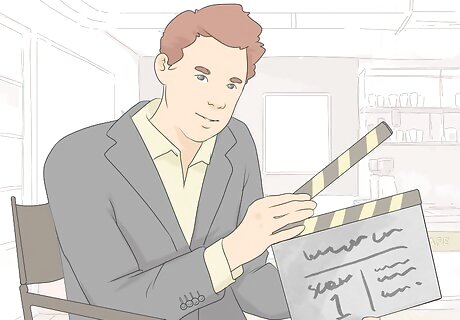
Choose someone to direct. The director controls the creative aspect of the movie and is a key connection between the crew and the cast. If you have an idea for a movie and know exactly how it should look and feel, it would be a safe bet that the director is you, but if you are not good at directing people and your not comfortable bossing people around, then, you can take a different approach on directing or just hire someone else and try to give them the full picture. You'll cast the major players, oversee the filming, and offer creative input where you see fit.
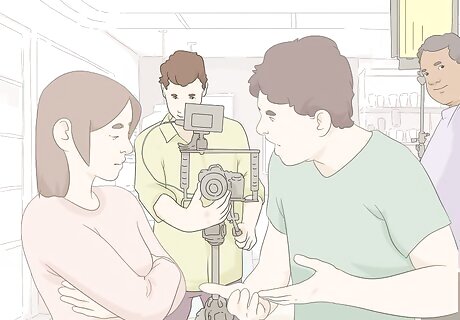
Choose a Cinematographer or Director of Photography. This person is in charge of making sure the lighting and actual filming of the movie go smoothly, as well as for deciding with the director how each shot should be framed, lit, and shot. He or she manages the lighting and camera crews or operates the camera on a small film.
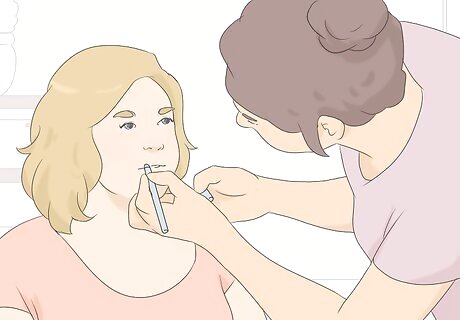
Assign someone the set design. This person is in charge of making sure the sets correspond with the director's creative vision. He or she might also be the props master (in charge of the items that fill the set). Costume, hair, and makeup design could be in the same category as a very small production. On a large production, this person would choose (and maybe even sew) every costume used in the film. On smaller productions, this position is usually merged with another job.
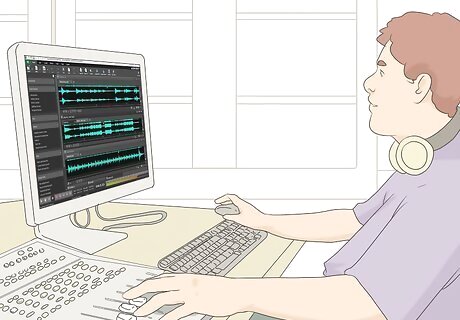
Put someone in charge of sound and music. The sound man may be one or more people. Dialog needs to be recorded either in the scene or looped in later during production. Sound effects, like gunshots and grenades or an explosion, all need to be created; music needs to be sourced, recorded, and mixed; and foley (footsteps, leather creaks, plates broken, doors slamming) all needs to be generated. The sound also needs to be mixed, edited, and lined up with the video in post-production. And remember, the music doesn't have to be very loud, it can be quiet in a quiet scene to the point where people aren't focusing on it as it now just acts an aid to capture the scene.
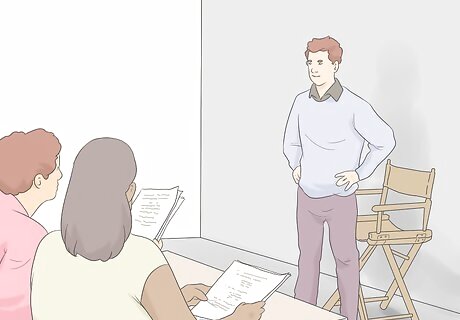
Cast your film. People in your community might work for screen credits in low-budget films. Of course, it would be advantageous to have a well-known name starring in your movie, but learning to play to the strengths of the actors you do have will ensure that you've got a great filmed product. If you need a cop character in your film, call one up and ask if he'd be willing to film a couple of scenes some afternoon. Just make sure that the movie doesn't involve anything illegal while the police officer is there, as this could not end well. If you need a college professor, contact the school. Test the range of your actors. If you know that one of them will have to cry in a sad scene, make sure he or she can do it before you contract for the project. Avoid scheduling conflicts. Make sure your actors can be available on-set when you need them. Be careful of stunts that may injure your actors. A big part of acting is nonverbal communication. Look for actors who can express how they're feeling and make you feel a certain way without having to say anything.
Filming and Editing
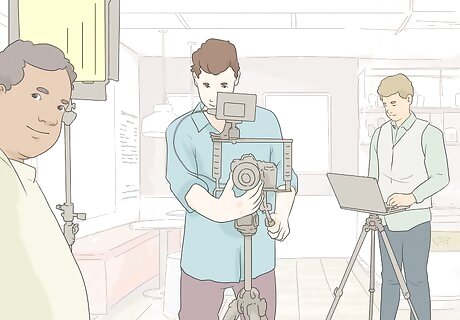
Gather and test your equipment. At the very least, you'll need a video camera. You will probably also need a tripod — to mount the camera for steady shots — lighting equipment, and sound equipment. Filming some "screen tests" would be a good idea. Give your actors the chance to practice while being filmed, and give the crew a chance to coordinate their actions.
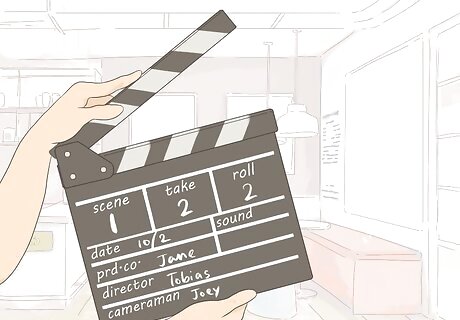
Plan meticulously. Keep track of which "take" is the best take for each scene, to help yourself in the editing process later. If you've got to comb through multiple missed takes and bad takes every time you want to find the scene you wanted, the editing process will be a drag. Make sure everyone's on the same page at the start of each day for filming each scene. It can take a lot to get a whole cast, crew, and location appointment together at once, so it might help to write out and distribute an itinerary at the beginning of the process.
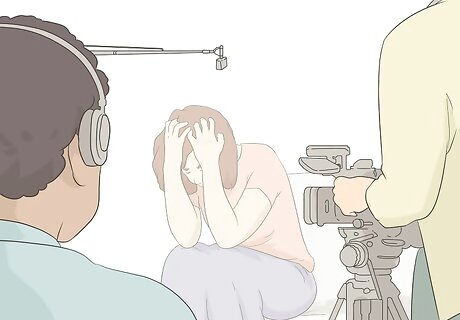
Film your movie. The decisions you make will result in the difference between a "home movie" or a professional-looking movie. Some people say to shoot multiple takes from multiple angles because it will be more interesting in the end, giving multiple options for the editing process. As a very general rule, professional filmmakers shoot each scene in a wide shot, medium shot, and close-up of important elements.
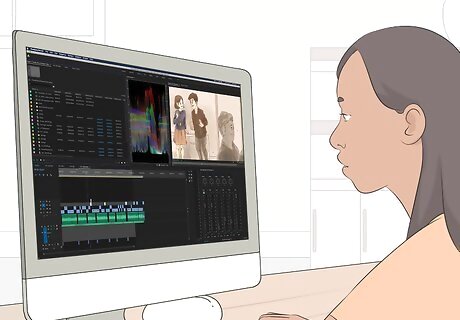
Edit your film. Take your footage to your computer, upload the files, then log them, identifying what shots work. Put together a rough cut using these shots. The way that you edit your film drastically affects the way the film ends up looking and feeling. Making jump cuts will hold the viewer's interest and set the tone for an action movie, but long, lingering shots have a powerful impact as well, but done badly this can be very boring. Consider the beginning of The Good, the Bad, and the Ugly. You can also edit to music, which is a fast and effective way of editing; you can also edit to music on a quiet section of the film, by choosing music that provides the right mood. Editing between various angles can quickly show multiple things going on in the same scene. Use your editing system's split or razor tool to create smaller clips from multiple shots, and then mix and match. You'll get the hang of it quickly, and with digital movie making, your mistakes are always saved by Undo.
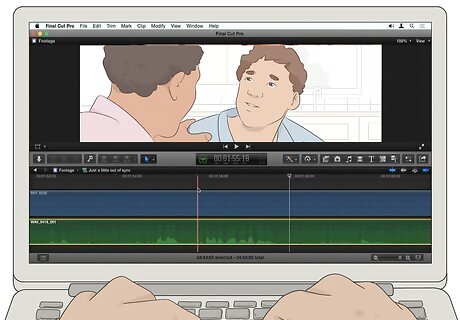
Sync sound effects and music. Make sure that your music flows with what is going on during the movie at that second, and that the live sound you recorded with the film comes through loud and clear. Re-record any important parts. Remember that if you are planning on distributing a film using found music can cause problems, so it is best if you can get music specially composed for the film; plus there are many skilled musicians out there who would love to get experience.
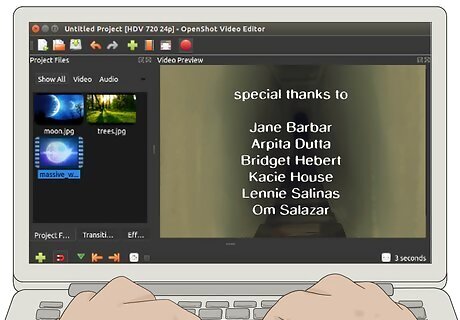
Create the title and credits sequences. You'll want to name your cast and crew at the end of the film. You can also include a list of "thank yous” to any organizations that were willing to let you shoot in their establishments. Most importantly keep it simple.
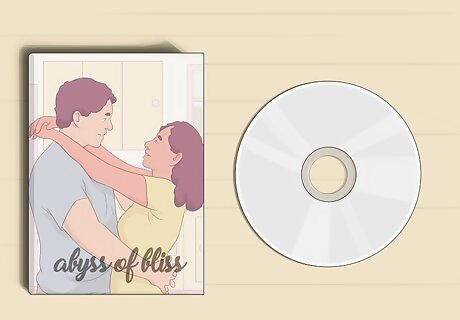
Export the film to a digital format DVD. Make a teaser or trailer. If you want to promote your film online or in other theaters, select pieces of it for a promotional trailer. Don't give away too much of the plot, but do try to catch the viewer's interest. Also don't forget to upload your movie to YouTube or Vimeo, or if your movie gets accepted into a theater, don't upload the movie to YouTube as you won't make as much money on YouTube vs. the box office, just upload teasers and stuff like that, and don't forget to advertise other places than YouTube!











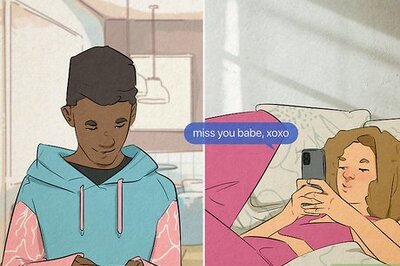




Comments
0 comment